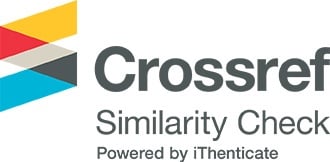Ứng dụng phương pháp bề mặt đáp ứng (RSM) trong tối ưu hóa công thức viên nén Febuxostat dập thẳng
Các tác giả
DOI: https://doi.org/10.59294/HIUJS.26.2023.527Từ khóa:
Febuxostat, viên nén, tối ưu hóa, RSM, dập thẳngTóm tắt
Febuxostat là một chất ức chế xanthin oxidase mới, mạnh, dùng đường uống, không purin, được sử dụng để điều trị bệnh gout và bệnh gout tophi tiến triển. Bên cạnh đó, phương pháp nén trực tiếp được sử dụng do quy trình sản xuất đơn giản và kinh tế hơn. Mục đích của nghiên cứu này là phát triển một công thức nén trực tiếp đơn giản và tiết kiệm chi phí cho viên nén Febuxostat bằng phương pháp bề mặt đáp ứng (RSM). Công thức tối ưu cho thời gian tan rã tối thiểu bao gồm 54.506% MCC, 3.925% CCS và 1.820% Mg St. Ngoài ra, công thức tối ưu đáp ứng đầy đủ các tiêu chuẩn của Dược điển Việt Nam V. Các giá trị thực tế thu được bằng cách sử dụng điều kiện tối ưu phù hợp tốt với các giá trị dự đoán với sai số phần trăm thấp (dưới 1%). Tóm lại, việc áp dụng phương pháp thiết kế thực nghiệm DOE đã phát triển thành công viên nén Febuxostat, có thể mang lại nhiều lợi thế khác nhau với phương pháp sản xuất hiệu quả về chi phí và đơn giản.
Abstract
Febuxostat is a novel, powerful, orally-administered, non-purine, xanthine oxidase inhibitor used for treating gout and ceaseless tophaceous gout. Besides, the direct compression method was used due to the simpler and more economical manufacturing process. The aim of this study was to develop a simple and cost-effective direct compression formulation of Febuxostat tablets by response surface methodology (RSM). The optimal tablet formulation for minimal disintegration time consisted of 54.506% MCC, 3.925% CCS, and 1.820% Mg St. In addition, the optimized formulation fully met the Vietnam Pharmacopeia V acceptance standards. The actual values obtained using the optimal conditions closely matched the predicted values, with a low percent error (less than 1%). In conclusion, the application of the DOE (design of experiments) approach successfully developed Febuxostat tablets, which can offer various advantages in terms of cost-effectiveness and simple manufacturing methods.
Tài liệu tham khảo
[1] L. Gaffo, Clinical manifestations and diagnosis of gout, Uptodate. Last updated: Jun 01, 2022.
[2] U.S. Food and Drug Administration (FDA), Uloric (Febuxostat) Tablets - Drug approval package, Drugs@FDA. Approval date: 2/13/2009. Available on: https://www.accessdata.fda.gov/drugsatfda_docs/nda/2009/021856s000toc.cfm.
[3] UpToDate, Febuxostat: Drug information, Lexicomp. Accesed: September 21, 2022.
[4] P. C. Em, V. V. Lenh, N. V. Cuong, N. D. Ngoc Thoi and L. T. Tuong Vi, “Formulation development, optimization, in vivo antidiabetic effect and acute toxicity of directly compressible herbal tablets containing Merremia tridentata (L.) extract,” J. Drug Deliv. Sci. Technol., vol. 84, p. 104445, 2023. DOI: 10.1016/j.jddst.2023.104445.
DOI: https://doi.org/10.1016/j.jddst.2023.104445[5] Bộ Y tế Việt Nam, Dược điển Việt Nam V, lần xuất bản thứ năm. Hà Nội: Nhà xuất bản Y học, 2018.
[6] S. S. Muvvala, M. M. Pavuluri and V. N. Ratnakaram, “Simple and Validated Ultraviolet Spectrophotometric Method for the Estimation of Febuxostat in Bulk and Pharmaceutical Dosage Forms,” Oriental J Chem., vol. 29, pp. 235-240, 2013.
DOI: https://doi.org/10.13005/ojc/290137[7] P. J. Sheskey, W. G. Cook and C. G. Cable, Handbook of Pharmaceutical Excipients, eighth edition. Libros Digitales-Pharmaceutical Press, 2017.
[8] USP USP44-NF39, United State Pharmacopoeia 44 - National Formulary 39, the United States Pharmacopeial Convention, Inc, Rockville, MD, 2021.
[9] M. Kaur, A. Mittal, M. Gulati, D. Sharma and R. Kumar, “Formulation and in vitro evaluation of fast dissolving tablets of febuxostat using co-processed excipients,” Recent Patents Drug Deliv. Form., vol. 14, pp. 48-62, 2020.
DOI: https://doi.org/10.2174/1872211314666191224121044[10] V. Patel, A. Patel and A. Shah, “Enhancing the dissolution rate of poorly soluble drug Febuxostat using spray dried amorphous solid dispersion technique,” Ars Pharm., vol. 64, pp. 123-138, 2023.
DOI: https://doi.org/10.30827/ars.v64i2.27058Tải xuống
Tải xuống: 456











